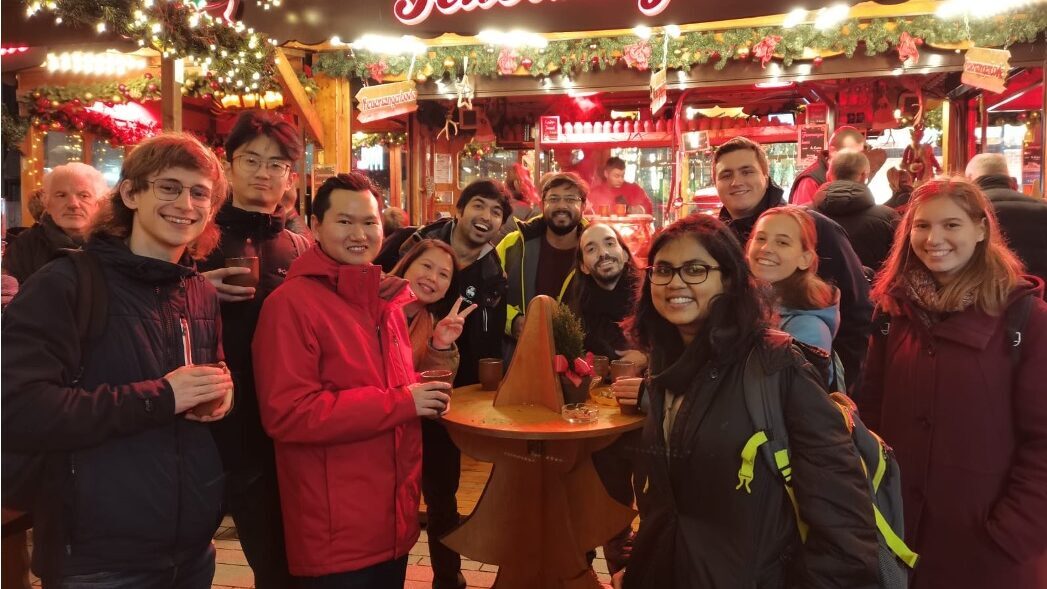We do interdisciplinary research, combining biology, physics, chemistry, and microfluidics. We extensively use lab-on-a-chip techniques and mainly work in a bottom-up fashion. Our research covers a wide range of topics, from the phase separation of proteins and condensate-membrane interactions to particle-stabilized Pickering emulsions and liquid crystal-based biosensing. We are also keen on diverse collaborative research, ranging from on-chip directed evolution to understanding the adhesion mechanism of ticks.
Biomimetic Systems: Towards Synthetic Cells

We are designing and building minimal mimics of natural cells, slowly increasing their organizational complexity and their ability to create and respond to out-of-equilibrium conditions. The scope for such synthetic cells covers entities mimicking a particular biological functional module as well as systems without clearcut biological analogues. Our starting point is on-chip production of a variety of three-dimensional microcontainers, including liposomes, single-, and double emulsions, and encapsulation of protein-based internal components. We are currently focussing on two things: (i) Control vesicle morphology and the internal organization, ultimately making it a smart, adaptable system responding to external cues. (ii) Create protein-based membraneless organelles inside the vesicles, capable of carrying out distinct biochemical reactions, thus making rudimentary nanoreactors.
Latest publications:
Chang et al., Commun. Chem., 2024
Ganar et al., ACS Synth. Biol., 2022
Ganar et al., COCIS, 2021
Biomolecular Condensates: Phase Transitions of Disordered Proteins

To regulate the thousands of interconnected biochemical reactions, cells have developed various strategies for spatial compartmentalization of their cytoplasm. A relatively recent finding is that of protein- and RNA-based membraneless organelles, also known as biomolecular condensates, formed through the process of liquid-liquid phase separation. Using a reductionist approach, we are studying the dynamics intrinsically disordered proteins and their ability to form condensates. A current prominent example is our study on glycine-rich proteins from tick saliva to form condensates, that can undergo ageing and may have important implications in the formation of tick bioadhesives.
Latest publications:
Ganar et al., Nat. Chem, 2024
Biosensing: Liquid Crystal-Based Microsensors

Rapid diagnosis is key to ensuring optimized treatment of diseases. Biosensing techniques, however, can be quite slow to perform, often requiring specialized laboratory equipment or technicians to interpret. We want to probe the potential of liquid crystals to exhibit a clear and rapid optical response in presence of biomarkers (antibodies, toxins, etc.). By harnessing their unique ability to exhibit crystalline ordering and birefringence, our goal is to produce a liquid crystal-based biosensor capable of rapid detection of biomolecules including lipids, allergens, and toxins. We would ultimately like to prototype a lab-on-a-chip diagnostic test that can be used on-field by a non-expert.
Latest publications:
Honaker et al., Small, 2024
Honaker et al., J. Mater. Chem. C, 2023
Honaker et al., ACS AMI, 2022
Lab-on-a-Chip: Developing Microfluidic Technologies

Microfluidic technology offers experimentalists highly controllable and versatile environments. A typical lab-on-a-chip device can handle small fluid volumes (in the µL range), flowing through user-defined microchannels at low flow rates (µL/min or much less). Such setting ensures laminar flow, offering innovative and unique possibilities to control molecules in space and time. Over the years, we have developed numerous microfluidic assays to tackle biological questions: quasi-2D microchambers to study step-by-step biochemical reactions in a flow-free manner, flow-assays to understand the surface-sensing mechanism in bacteria, bubble-blowing machines for making droplets, vesicles, Pickering emulsions, etc. We extensively utilize our on-chip tools, develop them further, and seek to design new ones.
Latest publications:
Chang et al., JoVE, 2023
Last et al., ACS Nano, 2020
